
This 1980 supernatural suspense film follows the fortunes of a family after they sell an ancestral plantation to a soap factory. Aside from the supernatural elements, the story touches on the themes of gender inequality, the issue of caste and even environmentalism with an insightfulness that is surprising in a Bollywood film of the era. Although there are influences from Western films such as The Exorcist, Gehrayee is firmly grounded in Indian culture with references to traditional practices, god-men and sacred rites. Starring a very young Padmini Kolhapure, Anant Nag and Rita Bhaduri, Gehrayee is a rather different Bollywood ‘horror’ film that has plenty of relevance even today.
The film starts with Chennabassapa (Sriram Lagoo) visiting his family plantation in a small village. The plantation is looked after by Basava (Suhas Bhalekar) who lives on the farm with his daughter Chenni (Rita Bhaduri). During his visit, Chennabassapa announces that he has sold the plantation to a soap factory as he needs money to build a new house in Bangalore. He offers Basava a job in the factory, or work in a bank in Bangalore, but Basava is devastated by the announcement and doesn’t take Chennabassapa up on any of his offers. Instead, he bewails the destruction of the forest and what he calls the rape of the land in the name of money.
On his return to Bangalore, Chennabassapa continues to demonstrate his total lack of empathy when retrenching workers from one of his factories. Despite other members of his team pointing out that it’s not about the monetary compensation, Chennabassapa ignores the humanitarian aspects and continues to concentrate only on profit, although he does pay off his workers in line with government regulations. It’s not that he is mean and only focused on profit, but he sees his workers as just another commodity and not worth any further consideration once he has no further use for them. Chennabassapa is a man of science and rationality, convinced of his own superiority and sure that he is always right, but by the end of the film, this is shown to be a bad thing, and not something to be proud of at all!
Shortly after Chennabassapa’s return from his village, his daughter Uma (Padmini Kolhapure) starts to behave very oddly, waking up screaming and speaking about events from Chennabassapa’s past in an odd voice. Unlike Chennabassapa, his wife Saroja (Indrani Mukherjee) is very superstitious and although she is accepting of the decision to take Uma to see a doctor, she also looks for other remedies and more traditional cures to help her daughter. As part of her treatment Uma undergoes shock therapy, which Chennabassapa’s son Nandu (Anant Nag) vehemently argues against. He is convinced that this will have a detrimental effect on his young sister and instead takes her out for rides on his motorcycle and trips to parks to help try and recover her senses. However, this seems to backfire as Uma then shockingly tries to seduce Nandu in front of their parents, and she continues to reveal indiscretions from Chennabassapa’s past.
One of these revelations is that Chennabassapa seduced Basava’s wife who then suicided by jumping into a well. Saroja takes Chennabassapa to task, telling him that like all men his sexual conquest meant nothing to him but was a major event for the woman that resulted in a death. It’s a small part of the plot, but it makes a big impact as, in a few words, Saroja rips apart her husband’s complacency and points out the inherent hypocrisy of their society. I wish the film had gone further into this and perhaps even brought it into the climax, but it’s still an excellent piece of writing and kudos to scriptwriters Vijay Tendulkar, Vikas Desai and Aruna Raje for including such a frank conversation in the film.
Meanwhile, as Uma appears to be getting worse, the family servant Rama (Ramakrishna) tries to help by suggesting a tantric lime placed under Uma’s bed. Apparently this will rot if she is possessed but will otherwise stay fresh. However the next morning the lemon is missing and shortly after Rama is sacked after the family’s food rots in the pan. At the same time, Saroja starts to look for other solutions and tries a succession of god-men who try to exorcise the evil spirit from Uma. One of these (a youthful Amrish Puri) kidnaps Uma to use in a demonic ritual of his own, but luckily Nandu and Rama are able to rescue her in time. As Uma becomes weaker and weaker the family becomes ever more desperate to finds a solution before time runs out. But perhaps the most shocking revelations occur at the climax of the film, when Nandu tries to find out why his family have been targeted and ends up raising Basava’s ghost to try and get to the bottom of Uma’s illness.
While there isn’t ever anything particularly frightening that happens in Gehrayee, some of the scenes of possession and the final climax are definitely quite creepy. Padmini Kolhapure is exceptionally good in her portrayal of a young girl possessed by a demonic spirit, and even if there are no horrific special effects, her expressions and body language perfectly express the two sides to her personality. Anant Nag is also excellent as Nandu, slowly starting to experience his own mental issues and managing to convey both his despair and his internal confusion as his beloved sister becomes a stranger. Sriram Lagoo and Indrani Mukherjee are also excellent and make the most of their conflicting views to keep the story moving along. The conflict between science and superstition is nicely equitable with both having their successes and missteps although in the end the supernatural problem requires a supernatural solution.
The background music from Laxmikant Pyarelal also adds to the suspense with odd noises and other-worldly screeches along with the more usual musical build-up. The contrast between Chennabassapa’s belief in science and medicine compared to his wife’s more spiritual approach to the problem works well and adds to the general uneasiness of the film. Nandu seems torn between the two belief systems which ultimately contributes to his own mental deterioration while Chennabassapa’s attitude also highlights the divide between rich and poor, and the harsh struggle to exist for those who live in small rural villages. Basava’s lament for the plight of the land echoes throughout the film, contrasting the lush parks in the city with the barrenness of the village once the factory has taken over the land. One of Uma’s breakdowns also occurs in a park where she is surrounded by trees, where it seems as if nature is taking its revenge on her family.
Although the story is about demonic possession, ultimately it’s the evils of society that end up as the focus of the film, and therein lies the real horror. Vikas Desai and Aruna Raje keep the outcome uncertain right to the very end and the juxtaposition of events that can be explained with those that cannot bring a feeling of unease that persists throughout. It’s very well done to keep the audience unbalanced and waiting for something awful to happen, right up until the climax. More of a social commentary that just happens to have a supernatural element, Gehrayee is a film ahead of its time and one that deserves a wider audience. 3½ stars.

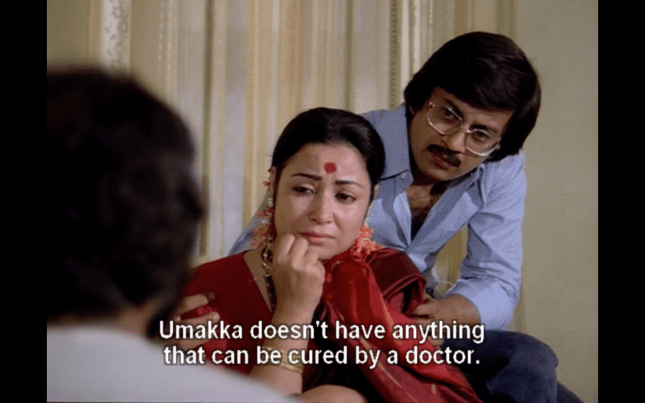


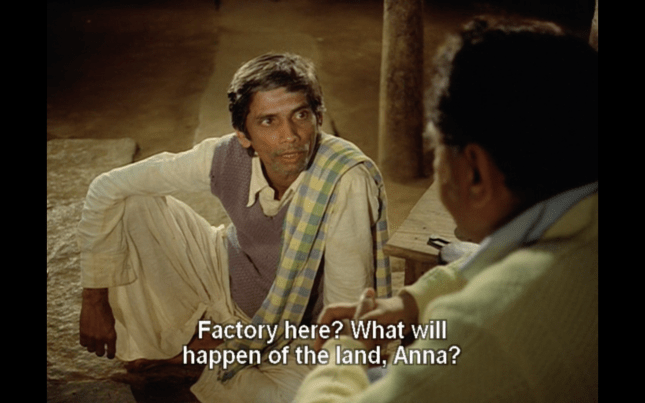
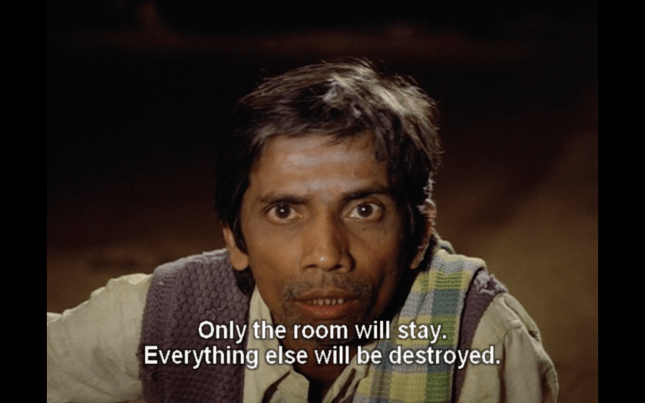


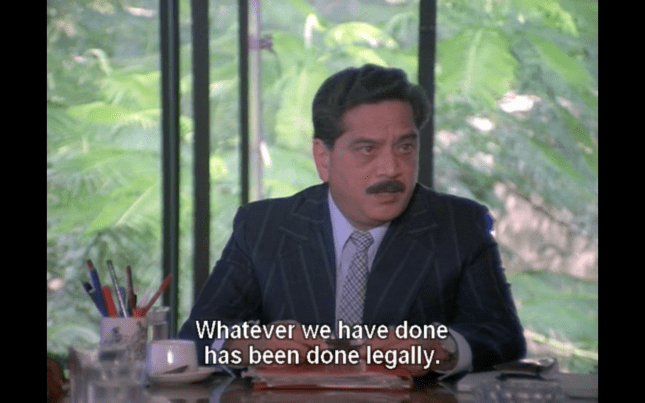
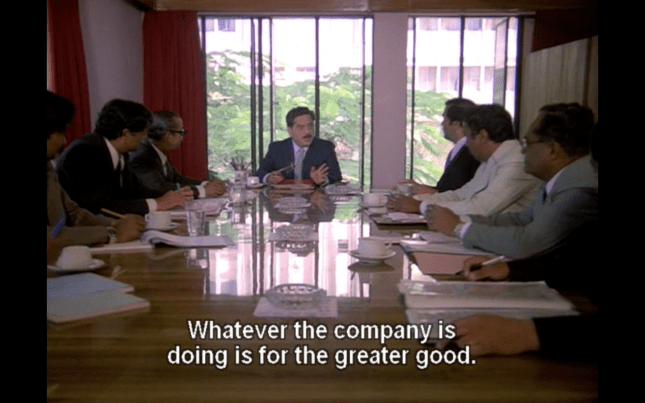
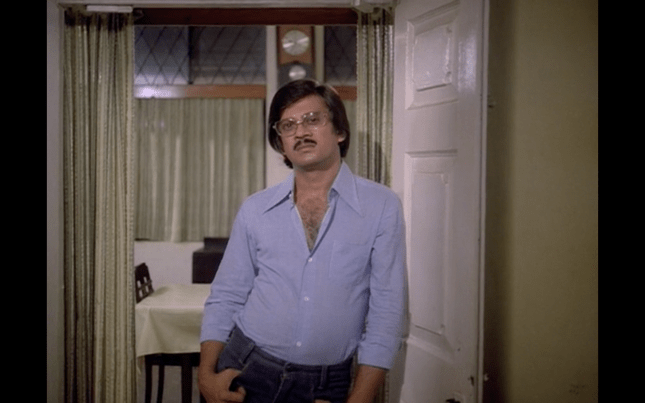


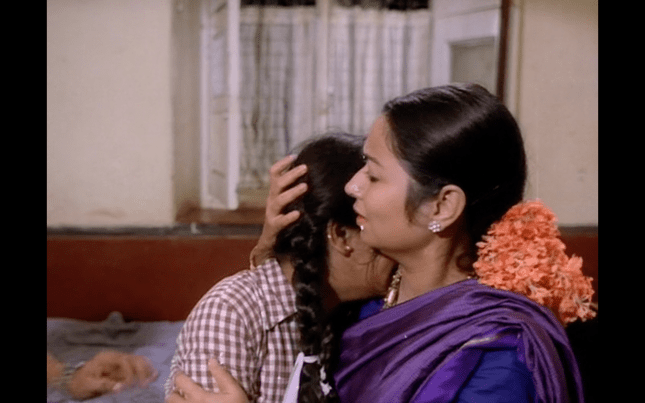
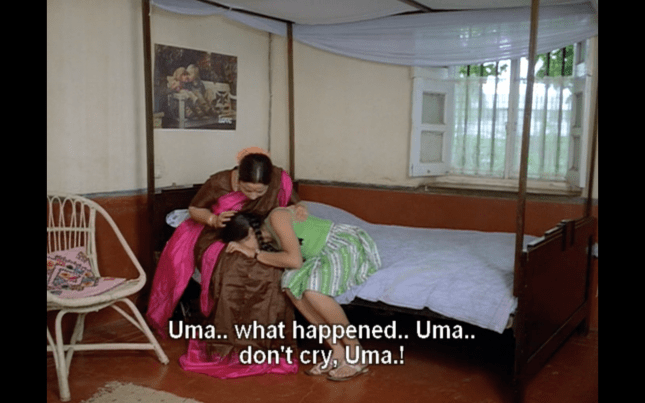
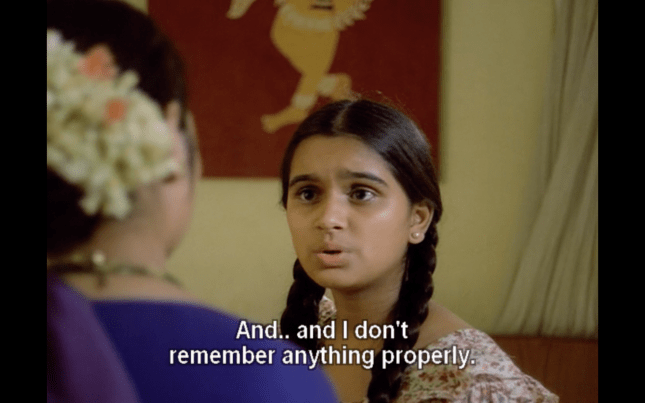
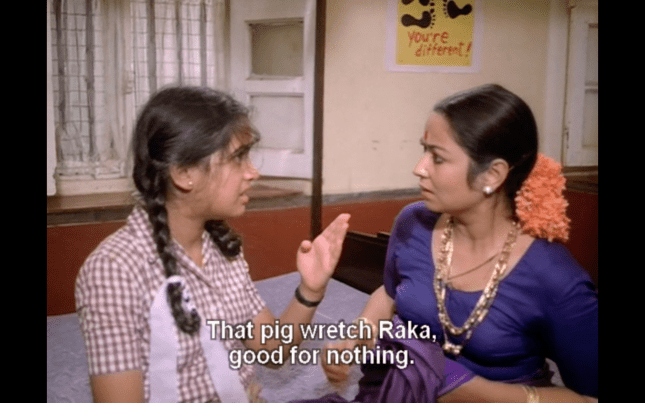

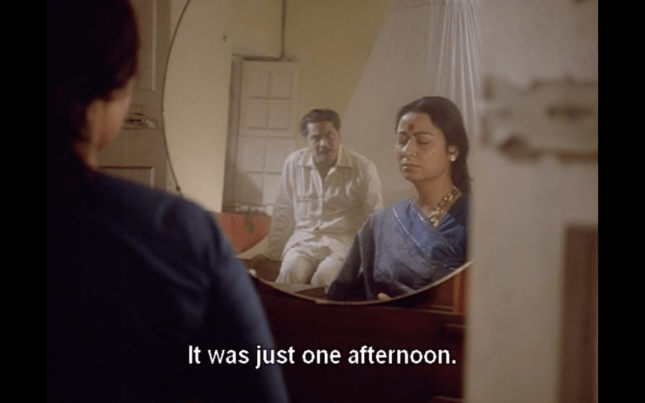

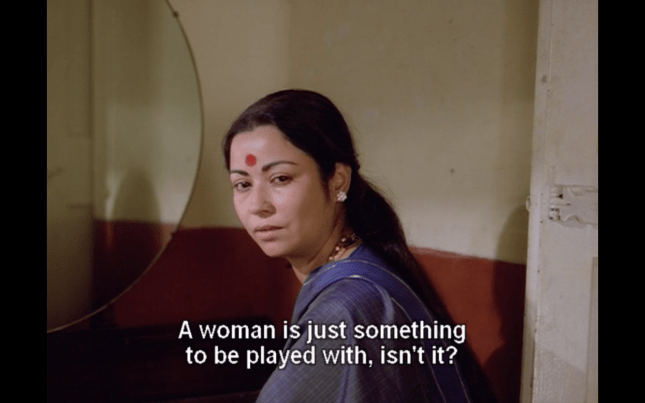
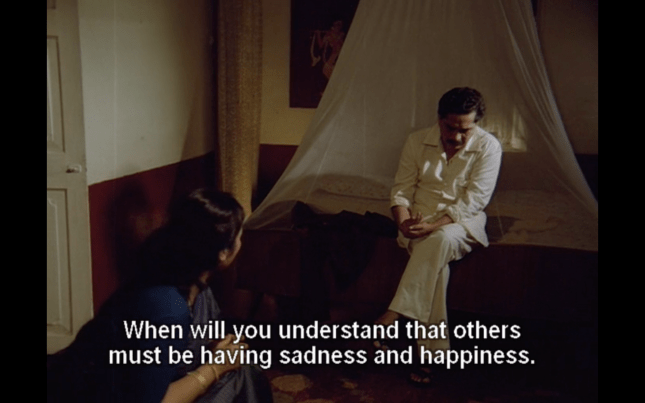


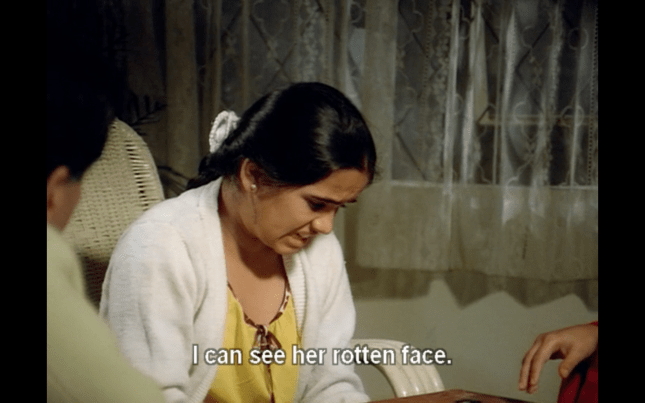

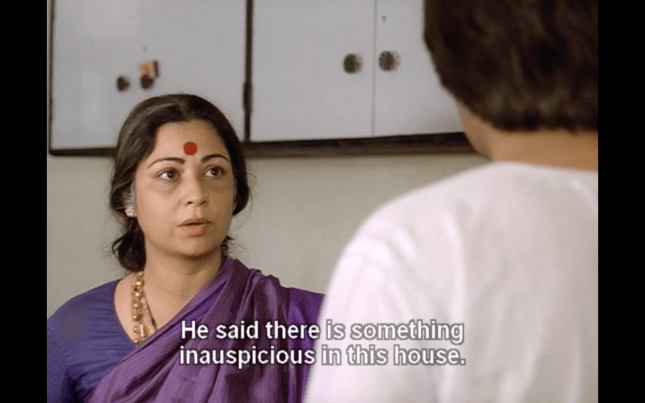



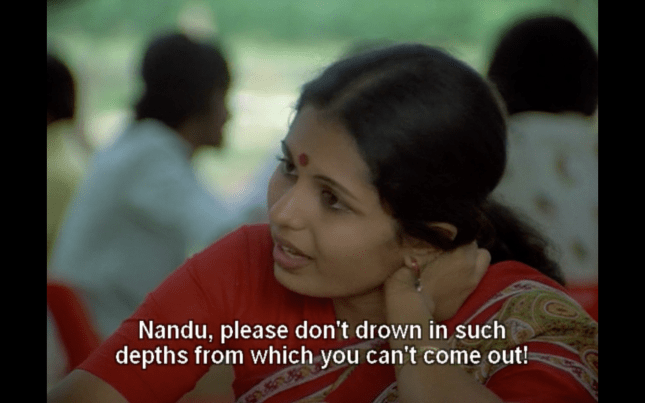

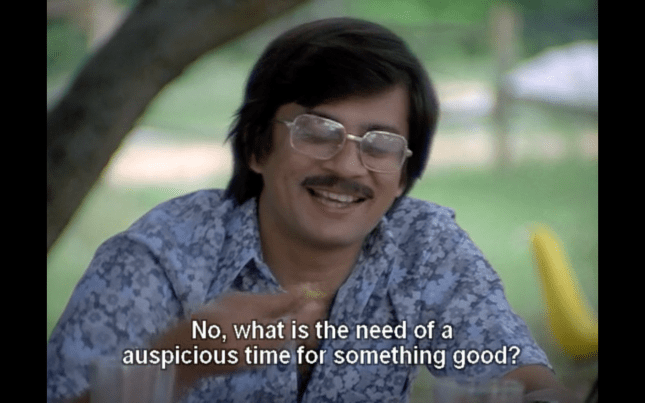


Great that you saw it. One of the few Indian horror films that’s not a cheap monster flick in a hackneyed mansion set with swinging chandeliers and animal trophies. Wonderful performance from Sriram Lagoo, who portrays a very human tyrant, the sort who is not innately evil but thinks he knows what’s best for everyone and tramples over others.
LikeLike
Exactly! So many Indian horror films are simply a rehash of the same haunted house/ghost format. This is really different. And I agree that Sriram Lagoo was wonderful. His character is so completely normal – as you say he is convinced that he is doing the best for everyone but never actually stops to consider if that is true.
For most of the film I felt that it was more a social commentary than a horror film, but the end is really creepy!
Cheers, Heather
LikeLike